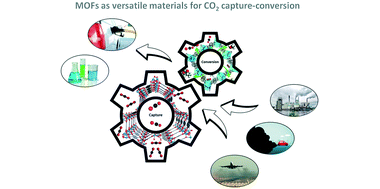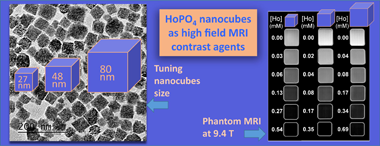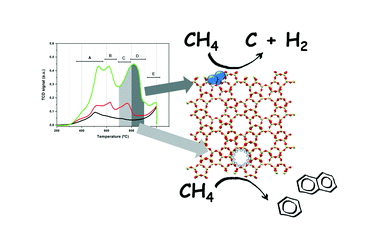Scientific Papers in SCI
2021
2021
Materiales Ópticos Multifuncionales
Toward Commercialization of Stable Devices: An Overview on Encapsulation of Hybrid Organic-Inorganic Perovskite Solar Cells
Aranda, Clara A.; Calio, Laura; Salado, ManuelCrystals, 11 (2021) 519
Show abstract ▽
Perovskite solar cells (PSCs) represent a promising technology for energy harvesting due to high power conversion efficiencies up to 26%, easy manufacturing, and convenient deposition techniques, leading to added advantages over other contemporary competitors. In order to promote this technology toward commercialization though, stability issues need to be addressed. Lately, many researchers have explored several techniques to improve the stability of the environmentally-sensitive perovskite solar devices. Challenges posed by environmental factors like moisture, oxygen, temperature, and UV-light exposure, could be overcome by device encapsulation. This review focuses the attention on the different materials, methods, and requirements for suitable encapsulated perovskite solar cells. A depth analysis on the current stability tests is also included, since accurate and reliable testing conditions are needed in order to reduce mismatching involved in reporting the efficiencies of PSC.
May, 2021 | DOI: 10.3390/cryst11050519
Química de Superficies y Catálisis
Understanding the opportunities of metal-organic frameworks (MOFs) for CO2 capture and gas-phase CO2 conversion processes: a comprehensive overview
Gandara-Loe, J; Pastor-Perez, L; Bobadilla, LF; Odriozola, JA; Reina, TRReaction Chemistry & Engineering, 6 (2021) 787-814
Show abstract ▽

The rapid increase in the concentration of atmospheric carbon dioxide is one of the most pressing problems facing our planet. This challenge has motivated the development of different strategies not only in the reduction of CO2 concentrations via green energy alternatives but also in the capture and conversion of CO2 into value-added products. Metal-organic frameworks (MOFs) are a relatively new class of porous materials with unique structural characteristics such as high surface areas, chemical tunability and stability, and have been extensively studied as promising materials to address this challenge. This comprehensive review identifies the specific structural and chemical properties of MOFs that result in advanced CO2 capture capacities and fairly encouraging catalytic CO2 conversion behaviour. More importantly, we describe an interconnection among the unique properties of MOFs and the engineering aspects of these intriguing materials towards CO2 capture and conversion processes.
May, 2021 | DOI: 10.1039/d1re00034a
Fotocatálisis Heterogénea: Aplicaciones
Fluorinated and platinized Titania for Glycerol oxidation
Murcia, J.J.; Bautista, E; Ávila Martínez, E.G.; Rangel R.N.; Romero, R.; Cubillos Lobo, J.A.; Rojas Sarmiento, H.A.; Hernández, J.S.; Cárdenas, O.; Hidalgo, M.C.; Navío, J.A.; Baeza, R.Materials Proceedings, 4 (2021) 37
Show abstract ▽
In this research, photocatalysts based on TiO2 modified by fluorination and platinum addition were evaluated in the glycerol oxidation. These materials were characterized by different instrumental analysis techniques to determine the physicochemical properties. It was found that the surface modification lead to improve the materials absorption in the Visible region of the electromagnetic spectra and to increase the surface area of TiO2. By HPLC analysis was possible to observed that the photocatalysts 0.5% Pt-F-TiO2 showed the highest yield and selectivity towards glyceraldehyde (GAL). It was also observed that the increase in the platinum content until values of 2% had a negative effect in the effectiveness of fluorinated Titania in the glycerol photo-oxidation. The fluorination and platinum addition modify some physicochemical properties of TiO2, leading also to modify the reaction mechanism and selectivity during glycerol partial photo-oxidation and the dose of photocatalysts is an important reaction condition to obtain GAL and Dyhidroxyacetone (DHA) with yields above to 70%.
April, 2021 | DOI: 10.3390/IOCN2020-07792
Materiales Coloidales
Holmium phosphate nanoparticles as negative contrast agents for high-field magnetic resonance imaging: Synthesis, magnetic relaxivity study and in vivo evaluation
Gomez-Gonzalez, E; Caro, C; Martinez-Gutierrez, D; Garcia-Martin, ML; Ocana, M; Becerro, AIJournal of Colloid and Interface Science, 587 (2021) 131-140
Show abstract ▽

The increasing use of high magnetic fields in magnetic resonance imaging (MRI) scanners demands new contrast agents, since those used in low field instruments are not effective at high fields. In this paper, we report the synthesis of a negative MRI contrast agent consisting of HoPO4 nanoparticles (NPs). Three different sizes (27 nm, 48 nm and 80 nm) of cube-shaped NPs were obtained by homogeneous precipitation in polyol medium and then coated with poly(acrylic) acid (PAA) to obtain stable colloidal suspensions of HoPO4@PAA NPs in physiological medium (PBS). The transverse relaxivity (r2) of aqueous suspensions of the resulting NPs was evaluated at both 1.44 T and 9.4 T. A positive correlation between r2 values and field strength as well as between r2 values and particle size at both magnetic field strengths was found although this correlation failed for the biggest NPs at 9.4 T, likely due to certain particles aggregation inside the magnet. The highest r2 value (489.91 mM-1s−1) was found for the 48 nm NPs at 9.4 T. Toxicity studies demonstrated that the latter NPs exhibited low toxicity to living systems. Finally, in vivo studies demonstrated that HoPO4@PAA NPs could be a great platform for next-generation T2-weighted MRI contrast agents at high magnetic field.
April, 2021 | DOI: 10.1016/j.jcis.2020.11.119
Materiales y Procesos Catalíticos de Interés Ambiental y Energético
Elucidating the nature of Mo species on ZSM-5 and its role in the methane aromatization reaction
Lopez-Martin, A.; Platero, F; Colon, G.; Caballero, A.Reaction Chemistry & Engineering
Show abstract ▽

The valorization of methane is one of the most important goals during the transition period to the general use of renewable energies. Its transformation into a valuable chemical like benzene by direct aromatization of methane (DAM) reaction has been extensively studied in the past years, mainly using Mo/ZSM-5 catalytic systems. Although viable, this DAM reaction poses a number of issues mainly derived from poor conversion and deactivation processes. Therefore, a deeper knowledge of these systems is needed. Herein, by combining chemical (TPR), spectroscopic (XPS), HAADF and other techniques, we have identified the different Mo precursors stabilized in the calcined ZSM-5 support, their nature (monomers, dimers and bulk Mo oxides), location in the zeolite framework (external surface or micropores), and the partial segregation of aluminum during the preparation of catalysts. The role of each Mo phase promoting or hindering the transformation of methane in aromatics has been also clarified.
April, 2021 | DOI: 10.1039/d1re00044f
- ‹ previous
- 78 of 410
- next ›














